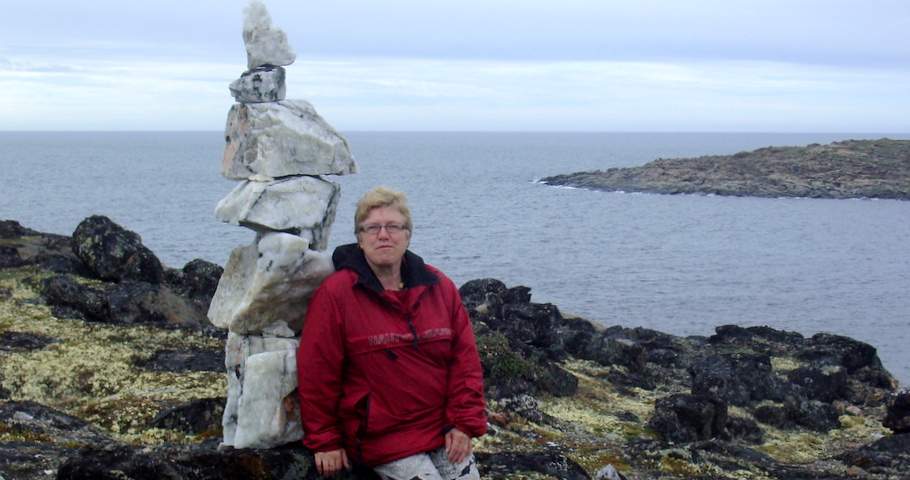 Although dozens of isolated indigenous communities in Canada have recently declared states of emergency due to suicide epidemics, unclean water, and a lack of adequate infrastructure, there is not yet into a common commitment to further the voice, the rights, and dignity of children.
Although dozens of isolated indigenous communities in Canada have recently declared states of emergency due to suicide epidemics, unclean water, and a lack of adequate infrastructure, there is not yet into a common commitment to further the voice, the rights, and dignity of children.
Children face unfavorable life outcomes
Children, many of whom endure adverse living conditions, characterized by poverty, underemployment, idleness, unsanitary conditions and overcrowding, face unfavorable life outcomes such as the suicide of a sibling. When there is no hope or little hope because it is not offered, people will sometimes turn to suicide as a permanent stop to the pain and the distress. As in the South, there is a need for a housing strategy to significantly reduce the gap.Factors that contribute to major stresses
Intergenerational relationships among Nunavik Inuit are stressed to the limit because they are facing such situations and serious food insecurity. All of those factors contribute to major stresses in the Northern households. The parents are often undereducated and have experienced circumstances related to the process of acculturation during settlement and forced enrollment in schools. The collapse of the hunting economy places many Inuit in a difficult socio-economic context.The fastest growing identifiable group
First Nations, Métis and Inuit children and youth identified by the collective term “Aboriginal” are the fastest growing identifiable group. The status and well-being of these children and youth, their rights and supporting their healthy development must be our concern (March 31stt 2016, 18:14) today and into the future.For Aboriginal children who live in all provinces and territories in Canada, there is the additional imperative, enshrined in the United Nations Convention on the Rights of the Child, that of sustaining languages, cultures, and community strength.
All children in Canada are rights holders
Aboriginal children, like all children in Canada, are rights holders. Issues plaguing indigenous communities have been there for at least three generations and the new Liberal government says it will do something to help solve the many problems the communities face. It is critical that all citizens play an important role in informing governments and the general public of concerns regarding the rights, status, and well-being of vulnerable children.Canada championed the United Nations Convention on the Rights of the Child. Additionally, in registering two reservations and a statement of understanding when it signed the Convention, Canada also demonstrated an awareness of Aboriginal children’s issues.
The goal of addressing the rights of Aboriginal children
The twentieth anniversary of the Convention was marked in 2009, and although the Convention has been used to raise awareness of the inequality and violations of Aboriginal children's rights within Canada, it has not resulted in profound improvements. Regrettably, the goal of addressing the rights of Aboriginal children and their persistent disadvantages remains unrealized.The Convention provides for a broad range of rights to health, safety, well-being and education of children. The United Nations Declaration on the Rights of Indigenous Peoples also speaks to the rights of Aboriginal children. However, the Declaration has not yet been adopted by Canada.
Children are issues of concern for all citizens of Canada
Children are issues of concern for all citizens of Canada and we must all strive to promote child care improvements nationwide. We need to promote better outcomes for children and youth.Aboriginal children must grow up knowing that they matter - that they are precious human beings deserving love and respect. As we all know, children hold the keys to a future bright with possibilities in a society of equals.
Our role as a society is to encourage and support governments to adopt more effective and responsive strategies, giving full expression to the rights and protections for children and youth.
No Child Should Have to Take the Long Way Home
Children, mothers, and communities are the object of this project No Child Should Take the Long Way Home. After all, every child is born with the right to have a better chance at a life free from abuse and violence.But the children are very vulnerable when they are removed from their birth families. When they are removed not only from their families but from their community, children lose out on being raised by their own families, in their own communities. As a result, there are increased numbers of Inuit children in child and foster care.
No Child Should Take the Long Way Home is a grassroots initiative to help children in need of loving care, of a protective and stable environment to meet their basic needs for protection, shelter, and education in a safe house in their own community.







No comments:
Post a Comment